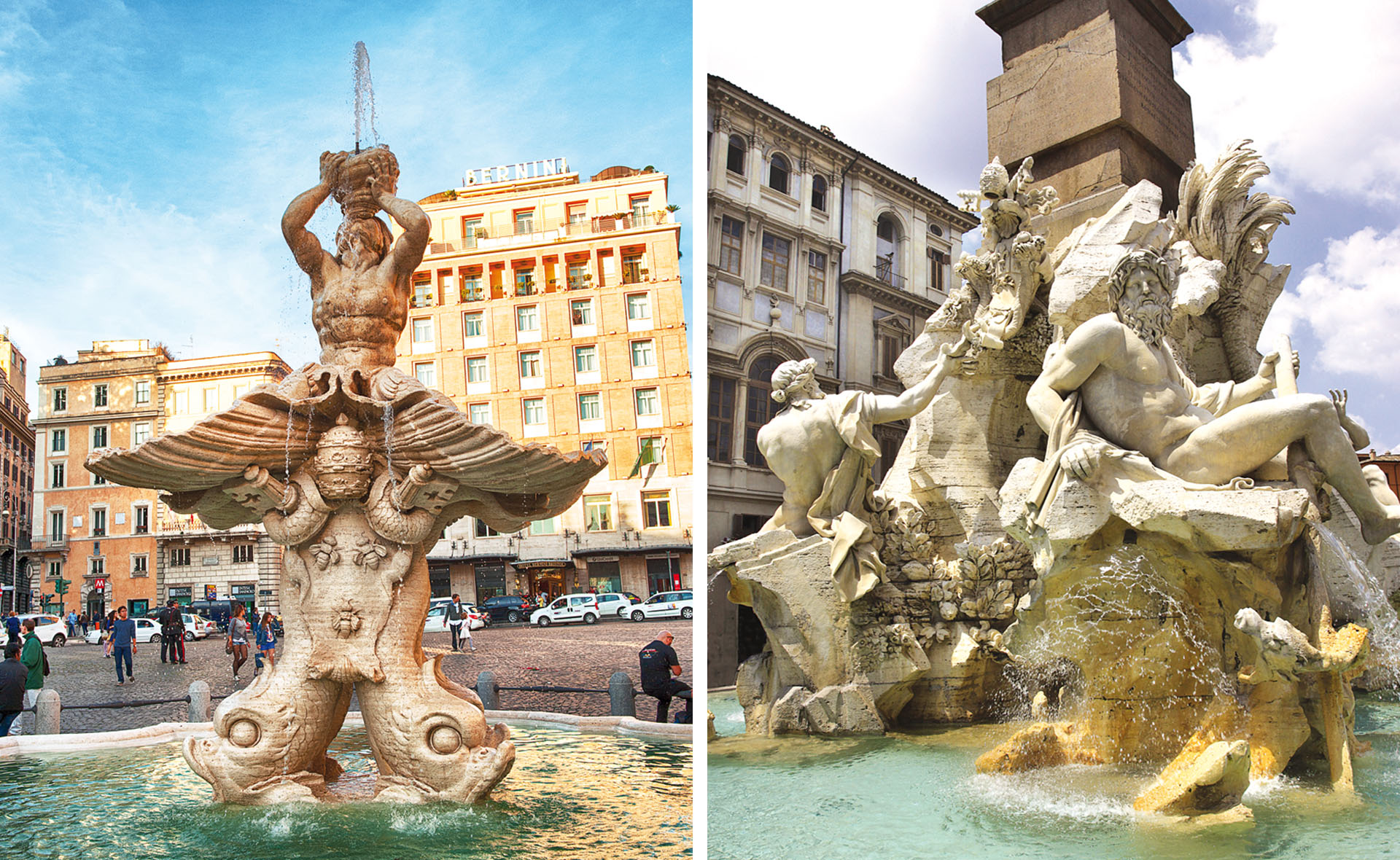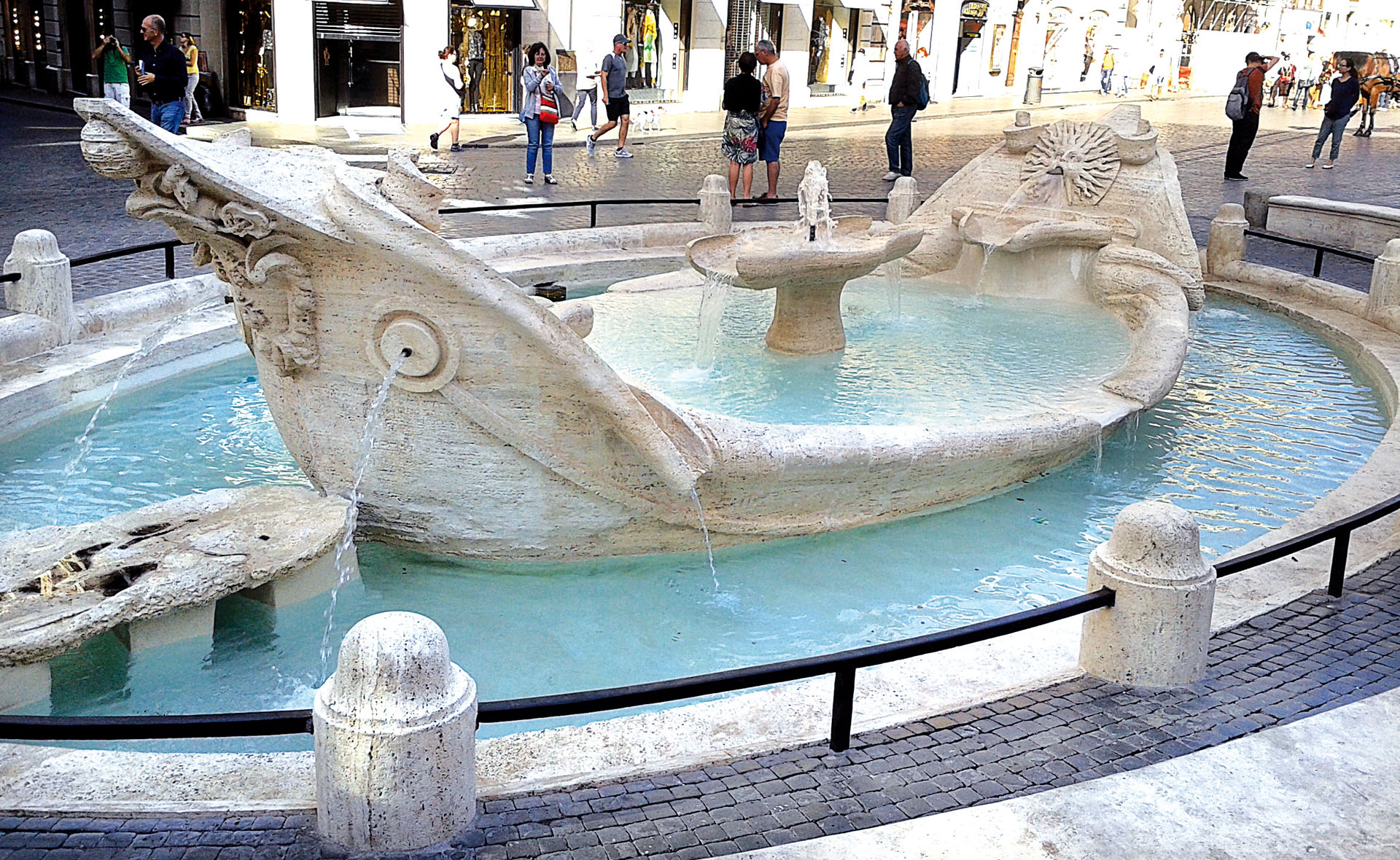The particular fusion between space and the shapes of nature makes Gian Lorenzo Bernini’s fountains works of art capable of arousing wonder at every glance.

Symbol of dynamism, vitality and metamorphosis, water takes on a fundamental role in the process of urban baroque transformation of the Eternal City. And the fountains of the architect and sculptor Gian Lorenzo Bernini (1598-1680) constitute one of the greatest examples.
Let’s start from the Fontana del Tritone (1642-43), located in the centre of Piazza Barberini, which tooks its name from the pontifical family. Presumably conceived with the intention of celebrating the twentieth anniversary of Urbano 8th’s ascent to the throne of Saint Peter, it consists of a low pool with four lobes. In the centre, four sinuous dolphins are engaged in the act of supporting, with their tails, an open shell on which stands an anthropomorphic triton, intent on blowing a conch shell, thus announcing the end of the storm. The triton is, therefore, a regenerating symbol of the Barberini family, caught in the act of celebrating the pontiff on the twentieth anniversary of his reign.
A stone’s throw from the Fontana del Tritone, between Via Veneto and Piazza Barberini, we find the Fontana delle Api (1643), with a simple but extremely elegant shape. Is made up of an open bivalve shell from which water spurts and on which are placed three large bees, the heraldic symbol of the Barberini family. This fountain was originally at the corner of Palazzo Soderini, between Piazza Barberini and Via Sistina, and was moved here only in 1916.
Bernini’s show in Piazza Navona
The Fontana dei Quattro Fiumi (1648-51) was built by Bernini in Piazza Navona at the behest of Pope Innocent X. With its revolutionary shapes, it consists of a very low circular basin with a monumental travertine rock inside, inhabited by four marble giants, which represent the major rivers of the four continents then known: the Nile, the Ganges, the Danube and the Río de la Plata. At the centre stands an obelisk, crowned by a bronze dove with an olive branch in its mouth, the emblem of Pope Innocent X, but also a symbol of peace.
The Fontana del Moro (1575-76), is the third monumental fountain in Piazza Navona, together with that of the Quattro Fiumi and that of Nettuno. Located on the southern side of the square, it is the result of Bernini’s original work, which transformed Giacomo della Porta’s poly-lobed pool into a spectacular water show, inhabited by tritons and marine animals. His idea was to create a large fountain with an imposing triton sculpture in the centre, then sculpted by his pupil, Giovanni Antonio Mari, in the act of retaining with all his strength an enormous fish intent on escaping between his legs. This figure with its distinct physical features was called “il Moro” by the people of Rome and still retains this name today.
The Fontana della Barcaccia

Located at the foot of the Piazza di Spagna, the Fontana della Barcaccia (1627-29) was designed by Pietro Bernini and his son Gian Lorenzo. In travertine, it has the shape of a boat (“barca”, in italian), hence the name “barcaccia”. The “barcacce” were boats used in the nearby Porto di Ripetta to transport wine from one side of the Tiber to the other. According to legend, during a flood a boat was washed up into the centre of the square and Pope Urban 8th commissioned the fountain in perpetual memory of the event. Note that the “cannons” of the boat “emit water” instead of fire, as a poem by Urbano 8th said, water that served to quench the thirst of the Roman people.
